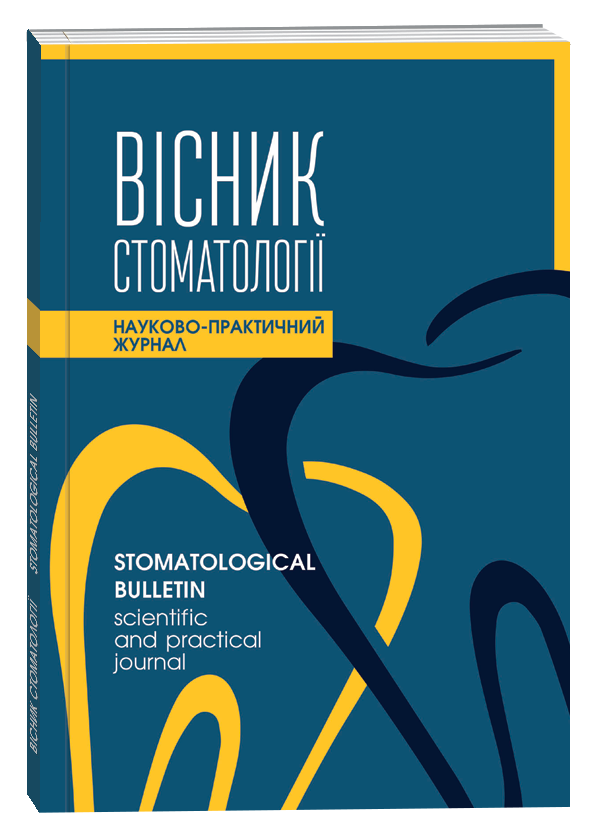THE ASSESSMENT OF THE PERIODONTAL TISSUES CONDITION AMONG PERIODONTOLOGICAL PATIENTS IN THE POSTCOVID PERIOD
DOI:
https://doi.org/10.35220/2078-8916-2021-41-3.3Keywords:
coronavirus disease, generalized periodontitis, periodontal indicesAbstract
The purpose of the study: to study the condition of periodontal tissues using periodontal indices in persons after coronavirus disease and who are in rehabilitation period. Research methods: Index assessment of periodontal tissues includes determination of marginal-alveolar index of PMA (C. Parma, 1960), periodontal index PI (A. Russel, 1956), index of oral hygiene OHI-S (I. Greene, I. Vermillion et al., 1964), the index of gums bleeding (Sulcus Bleeding. Index – SBI) – by HR Muhlemann, A.S. Mazor (1958), as well as measuring of the depth of periodontal pockets and the X-ray screening using panoramic radiography. Scientific novelty: When studying the features of the dental status of patients in the postcovid period the pathological changes of the periodontium of all examined groups of patients are characterized by higher periodontal indices compared with the control group, which are directly correlated with the degree of development, course of generalized periodontitis, its rapid progression course and treatment on the one hand, and complications of coronavirus disease on the other. Conclusions: The analysis of the index assessment results in the periodontal tissues of the patients in the postcovid period reveales a high index of oral hygiene, active manifestation of inflammatory and greater extent of inflammatory-dystrophic lesions of its tissues, as evidenced by papillary-marginal-alveolar index and depth’s of periodontal pockets. The future studies of the periodontal pockets microflora, cytological screening of scrapings from the mucous membrane of the tongue, cheeks and marginal gums, the study of pathogenetic mechanisms of general multiorgan and local hypoxia in periodontal tissues will contribute to targeted prevention, development of new treatment methods for periodontal patients after coronavirus disease.
References
Sukumar K., Tadepalli A. Nexus between COVID-19 and periodontal disease. J Int Med Res. 2021;49(3):3000605211002695.
Lipsky M.S., Hung M. Men and COVID-19: a pathophysiologic review. Am J Mens Health. 2020;14(5):1557988320954021.
Hui D.S., Madani E.I.A., Ntoumi T.A., Kock F., Dar R.O et al. The continuing 2019-nCoV epidemic threat of novel coronaviruses to global health – The latest 2019 novel coronavirus outbreak in Wuhan, China. Int J Infect Dis. 2020;91:264–6.
Badran Z., Gaudin A., Struillou X., Amador G., Soueidan A. Periodontal pockets: A potential reservoir for SARS-CoV-2? Med Hypotheses. 2020;143:109907.
Борисенко А.В., Воловик И.А. Состояние стоматологического статуса у лиц молодого возраста в зависимости от наличия заболеваний пародонта. Совр. стом. 2016; 1: 28–30.
Данилевський Н. Ф. Заболевания пародонта / Н. Ф. Данилевський, А.В. Борисенко. Київ : Здоров’я, 2000. С. 462.









